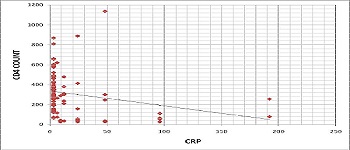
Nagesh Wadgera
BMCRI, India
Title: C-reactive protein as an early marker of opportunistic infections in HIV
Biography
Biography: Nagesh Wadgera
Abstract
Opportunistic infections account for the majority of death in untreated patients with AIDS. CRP is a highly sensitive marker of infection and inflammation and its level increase with infection. The present study was undertaken among 100 HIV+ patients, at ART Center Victoria Hospital, Bangalore. With the informed consent of the patient, a generalized pro forma was filled up consisting of patient’s clinical presentation and diagnosis. Their CRP level and CD4 count were measured. 56 HIV+ patients were asymptomatic and acted as control giving a negative test for CRP (<6 mg/l), showing no base line rise in CRP. Patients with infectious diagnosis showed a positive test for CRP, while patients on treatment were negative. Among the infectious cases, bacterial infection showed high level of CRP (mean 32 mg/l) compared to viral/fungal infection (mean 9 mg/l). Combinations of opportunistic infections produced a high level of CRP (mean 45 mg/l). A graph of CRP along x-axis and CD4 count along Y-axis were plotted which showed a negative correlation (r=-0.2324, p<0.01 and lzl=2.40). From the graph, the CRP level at which ART can be started is >92.413 mg/l [taking <200 (cells/μl) as the CD4 count at which ART is started]. Patients showing negative test for CRP need not be started with ART, as their CD4 count is found to be approximately 329 cells/μl. CRP level in HIV patients has a prognostic significance and can be used as an early marker of Opportunistic infections.


